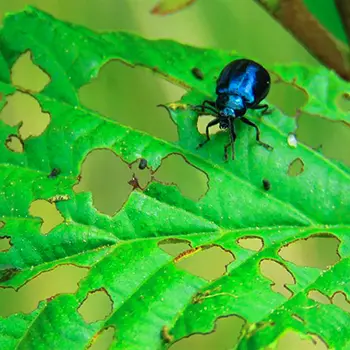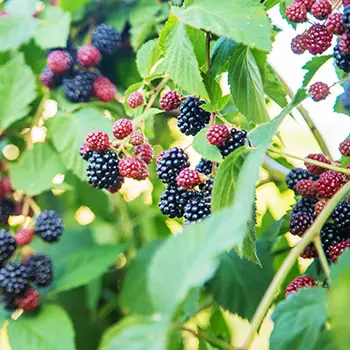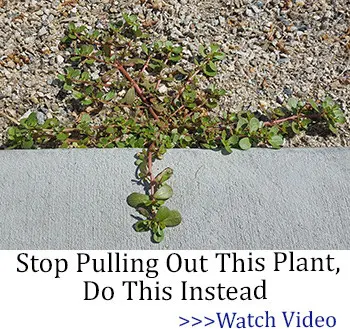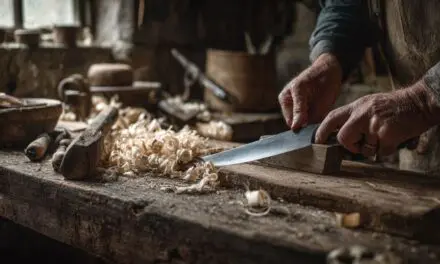Perhaps the idea of using toothpaste in the garden seems a little strange to you. Trust me, at one point, it was odd for us, too. Nowadays, we use it all the time and most of the time, it’s frequently cheaper than the alternatives. A smart gardener always knows how to use what’s on hand, what’s available for the cheapest cost, and what they can find in a jiffy if they need it. Toothpaste fits every single one of these.
One quick side note: if you’re using the type of toothpaste that’s sugar-free, remember that almost all sugar-free substitutes are toxic to pets, wildlife, and so forth. This includes, but is definitely not limited to, xylitol, birch sugar, and so forth. If you have pets playing around near the garden, don’t use these.
Pest Control
Almost all toothpaste at the dollar store (or other bargain areas) is mint-based or mint-scented types that will send pests running. Ever notice how almost all mint plants can grow unbothered by most pests? It’s because almost all animals hate the scent of mint, which is actually released due to trauma caused to the plant.
For most animals, the scent of mint so many of us love so much is like rubbing a habanero pepper all over their face. It stings, the taste isn’t something that they desire, and it’s so much more effort than they want to put out when your cabbage is usually just inches away and starting to wilt in this heat, anyway.
Related: 9 Best Plants That Naturally Repel Pests from Your Homestead
That said, mint toothpaste probably won’t drive away rabbits or mice, simply because they have gotten so used to dealing with human contraptions that those scents no longer bother them.
Want to use this trick to keep insects, birds, and a variety of other pests at bay? Again, make sure that your toothpaste does not contain a fake sweetener. The last thing that we want to do is hurt the environment, right?
Using the tube, draw a small line around the garden area you desire to protect. Pests, even squash bugs, will go running in fear to get away from the terrible smell of a delicious minty-fresh garden.
Protection For Your Gardenware
Everyone is well aware that the old trick for polishing silver was to simply use a little high-grit toothpaste on it and your silverware would be sparkling (maybe with a little extra-added elbow grease, too). However, you can protect your gardening implements and pots long-term with this trick.
Using a dollop of toothpaste on a rag, rub down your exposed metal tools and pots. This should not be done on those who still have plenty of protective black coating on them, or any sort of coating at all since the toothpaste may actually make the coating rub off faster.
If you are treating exposed metal, rub the toothpaste into the steel (or iron, if you have very old tools), until the metal is gleaming. Allow it to dry for at least 24 hours before you use it again. Though metal is not particularly porous, it will absorb the necessary “nutrients” from the toothpaste and, dare we say it, steel itself a little better.
You can also use this on terra cotta and metal pots to help clean them and to make them a great deal more weatherproof. Take a toothbrush and scrub the toothpaste into the pot until it disappears entirely or is absorbed. Once it is, allow the pot to dry entirely and remain dry for at least 48 hours before you use it. Remember not to use toothpaste with added “natural” ingredients (such as essential oils in large quantities) or you’ll be waiting for a very long time for those to fully absorb.
Give Berries a Fighting Chance
Bird netting not working? Sparrows picking you clean? We’ve all tried the pie pan method, CDs, and so many other shiny and confusing objects for our brilliant feathered friends and sometimes, nothing works.
Your last ditch effort to save your berries? Put a little toothpaste on the stem.
Related: 16 Uses Of Sticky Sap For Wilderness Survival And Self-Reliance
We realize this sounds crazy, but many birds do not like the bright white “mold”-y appearance a tiny bit of toothpaste appears to make. They avoid these berries and stems entirely. The smell also bothers them, but it seems to us that they want prime berries just ready to be picked; not berries that look as if they’re about to fall apart or rot off the branch.
You can also put a tiny dot or stripe of toothpaste on your scarecrows to make them even brighter and easier to spot. I suggest doing it along where a human neck would be, or along the arms. These bright white flashes copy some human skin tones and stand out against the soil on the ground, scaring birds away from your precious berry plots.
Outlining Garden Plots
If getting ready to start work on your garden, no matter what time of year, you can get good use out of toothpaste by simply putting it in a tiny condiment container and squeezing out a little line all the way around the new garden plot.
Bluntly, doing this you’re evicting old inhabitants of your new garden plot. As mentioned above with pest control, you’ll be chasing away all of the bugs due to the minty or bubble gum scent of your toothpaste. But not only that; you’ll also be able to spare yourself a chalk or string outline.
Last But Not Least
When you’re finished with your toothpaste, remember that you can simply let it wash into the ground (via rain or by putting the hose on it). However, if there is a significant amount of it, we recommend mixing it into your compost pile. Long-term, once the scent is gone, it breaks down into a nice little bit of calcium for your pile and will certainly pull its weight within.
However, if you are using a culture of insects to work your compost, you may want to go ahead and skip this step. Happy Gardening!
You may also like:
An Insanely Effective Way to Build a 5 Year Food Stockpile (Video)
Strange Gardening Tips And Tricks That Really Work




















If it is the mint that makes bugs leave, then why not just use mint? Why risk the lives of animals with toothpaste.
I’m surprised the writer doesn’t address fluoride that is added to toothpaste, which is highly toxic. No mention of having an organic garden and how toothpaste will effect that. Where to put toothpaste on the berries – the stem? At the base? I suppose experiment with it.
Interesting article. I’m glad they wrote it. I’ve heard planting marigolds attracts good insects that eat bad insects. Good luck happy gardeners!